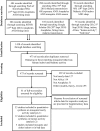Mosquito feeding behavior and how it influences residual malaria transmission across Africa
- PMID: 31285346
- PMCID: PMC6660788
- DOI: 10.1073/pnas.1820646116
Mosquito feeding behavior and how it influences residual malaria transmission across Africa
Abstract
The antimalarial efficacy of the most important vector control interventions-long-lasting insecticidal nets (LLINs) and indoor residual spraying (IRS)-primarily protect against mosquitoes' biting people when they are in bed and indoors. Mosquito bites taken outside of these times contribute to residual transmission which determines the maximum effectiveness of current malaria prevention. The likelihood mosquitoes feed outside the time of day when LLINs and IRS can protect people is poorly understood, and the proportion of bites received outdoors may be higher after prolonged vector control. A systematic review of mosquito and human behavior is used to quantify and estimate the public health impact of outdoor biting across Africa. On average 79% of bites by the major malaria vectors occur during the time when people are in bed. This estimate is substantially lower than previous predictions, with results suggesting a nearly 10% lower proportion of bites taken at the time when people are beneath LLINs since the year 2000. Across Africa, this higher outdoor transmission is predicted to result in an estimated 10.6 million additional malaria cases annually if universal LLIN and IRS coverage was achieved. Higher outdoor biting diminishes the cases of malaria averted by vector control. This reduction in LLIN effectiveness appears to be exacerbated in areas where mosquito populations are resistant to insecticides used in bed nets, but no association was found between physiological resistance and outdoor biting. Substantial spatial heterogeneity in mosquito biting behavior between communities could contribute to differences in effectiveness of malaria control across Africa.
Keywords: Anopheles; LLIN efficacy; Plasmodium falciparum; malaria transmission; vector interventions.
Copyright © 2019 the Author(s). Published by PNAS.
Conflict of interest statement
The authors declare no conflict of interest.
Figures





References
-
- World Health Organization W , World Malaria Report 2017 (Geneva, 2017). https://apps.who.int/iris/bitstream/handle/10665/259492/9789241565523-en.... Accessed 4 December 2017.
-
- Ranson H., Lissenden N., Insecticide resistance in african Anopheles mosquitoes: A worsening situation that needs urgent action to maintain malaria control. Trends Parasitol. 32, 187–196 (2016). - PubMed
-
- World Health Organization , Global Report on Insecticide Resistance in Malaria Vectors: 2010–2016 (World Health Organization, Geneva, Switzerland, 2018). https://www.who.int/malaria/publications/atoz/9789241514057/en/. Accessed 12 September 2018.
Publication types
MeSH terms
Substances
Grants and funding
LinkOut - more resources
Full Text Sources
Medical

